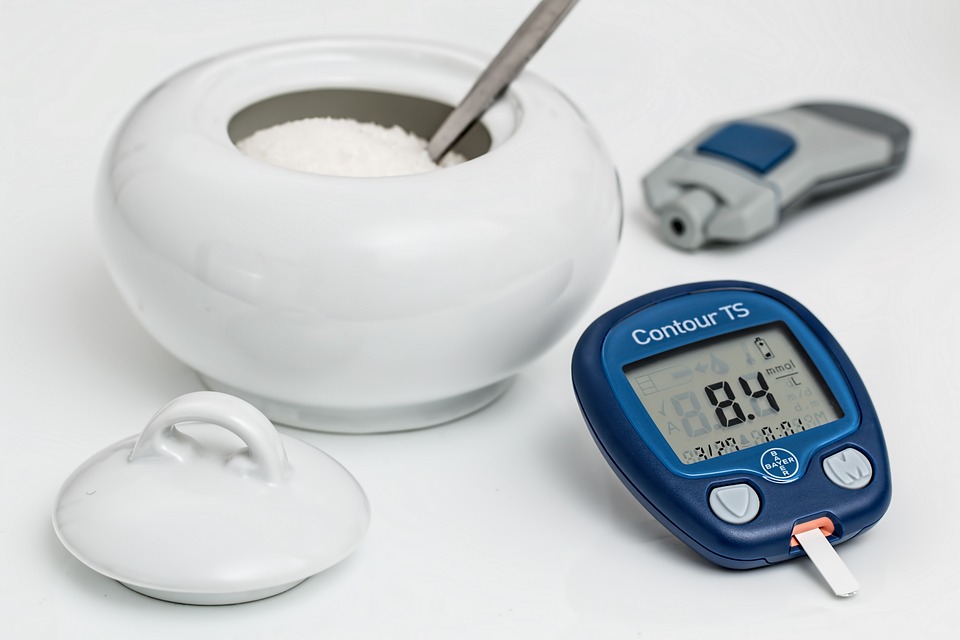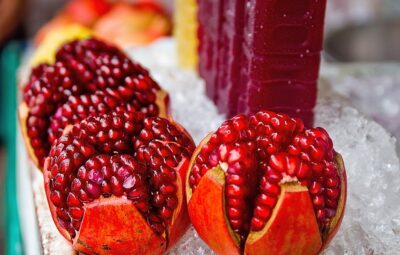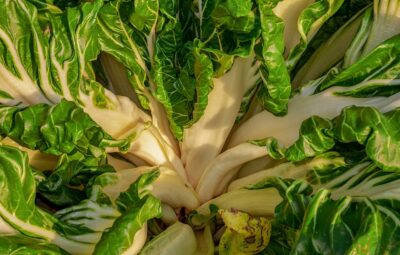Diabetes can strike anyone from any phase of life. The three most common types of diabetes are type 1, type 2, and gestational diabetes. About 10% of all people who have diabetes have type 1 diabetes. If you are diagnosed with this disease, you may wonder what types of food and drink you are allowed to have. Unfortunately, there are many myths about food and drink restrictions. You don’t have to give up all of your favorite foods. A type 1 diabetes diet is not complicated, but some people may not be sure about the food choices they should make.
Food has a direct effect on blood glucose. An essential part of managing type 1 diabetes is making sure to have a balanced diet. This means including the right amounts of carbohydrates, proteins, and fats in your meals. Because of this, you have to be more careful about the carbohydrates (carbs), proteins, and fats you eat to keep your meals balanced. There’s a lot to learn about type 1 diabetes. Although it may not be initially easy to learn about diabetes-friendly foods, it will be helpful in the long term.
What is Type 1 Diabetes?
Type 1 diabetes is an autoimmune condition where the body’s immune system destroys beta cells that produce insulin. This means that the body isn’t producing enough insulin. The disease primarily affects the pancreas and causes it to stop producing insulin. Type 1 diabetes is most common in children or young adults.
Type 1 diabetes can be challenging to live with, but you can manage it by eating a healthy diet and being active.
How Does Food Affect Type 1 Diabetes?
Different foods affect your blood glucose levels differently. Some foods raise blood glucose more than others. There is no specific diet that is recommended for people with type 1 diabetes. The key to managing your blood sugar is understanding how different foods affect your blood sugar levels. The three primary nutrients found in foods are carbohydrates (carbs), proteins, and fats.
Carbohydrates
Carbohydrates are found in starches and sugars present in grains, fruits, vegetables, milk products, and sweets. Although carbohydrates are the main source of energy in our bodies, consuming too many of them can have negative effects on blood sugar levels. Refined sugars are the main cause of the sudden increase in blood sugar levels in diabetes. Complex carbs found in vegetables, fruits, and whole grains are a better choice.
Proteins
Protein can help keep you feeling full and satisfied. Proteins will not cause your blood sugar to spike in the way that carbohydrates will. Although protein is important, you should not have too much of it. How much protein you need depends on your age, gender, health, and physical activity level. When you eat carbohydrates with protein, it can take longer for your body to convert the carbs into glucose. So, it does not affect blood glucose levels significantly.
Fats
Healthy fats are important for a balanced diet because they don’t raise blood sugar levels. Fats are high in calories, so pay attention to portion sizes. Those with diabetes should pay attention to foods high in polyunsaturated and monounsaturated fats, as well as omega-3 fatty acids. And try to consume less saturated fat, trans fats, and hydrogenated fats.
Foods You Should Avoid
Highly Processed Foods
When anything is processed, the nutrients in it are diminished, making it more difficult to get the nutrition your body needs. Furthermore, processed foods contain a range of additives that can make diabetes worse and also increase the chance of developing cancer, cardiovascular disease, and high blood pressure.
Refined Carbs
Refined carbohydrates lack most vitamins, minerals, and fibers. Foods that have a high glycemic index are digested quickly. A high glycemic index (GI) leads to greater spikes in blood sugar and insulin levels following a meal. Not only does it have a negative effect on teeth, but it also raises the likelihood of obesity, heart disease, and diabetes. Some examples of foods that contain refined carbohydrates are white flour, white bread, white rice, pastries, sodas, snacks, sweets, breakfast cereals, and foods that have added sugars.
Full-Fat Dairy Products
Dairy products are a great source of calcium, which is essential for a healthy diet. Although it may seem healthy, this food may actually be dangerous for diabetics because it contains high levels of fats and carbohydrates. Furthermore, consuming milk with carbohydrates can result in higher blood sugar readings. You need to be especially careful when you’re adding sugary foods like chocolate milk, ice cream, and yogurt to your diet if you have diabetes.
Saturated Fats
Saturated fats have harmful effects on insulin activity. Pancreatic beta cells produce insulin, and if they are killed, this function will be lost entirely. This means that you should reduce the amount you eat if you want to decrease your chances of developing diabetes. The majority of these chemicals are found in animal-based foods, with beef, pork, bacon, and processed meats being the primary sources. According to research, saturated fats are more harmful to the human liver.
Sodas and Other Sweetened Beverages
The sugar content in drinks like soda makes it harder for people who already have diabetes to keep their blood sugar under control. Soda makes your blood sugar spike because the sugar is quickly digested. This can lead to insulin resistance. There is a greater chance of developing diabetes if sugary drinks are consumed on a regular basis.
Food Items That May Help To Control Blood Sugar
1. Beans
Fiber-rich foods can help you feel full for longer periods of time. Beans, including black beans, contain carbohydrates, dietary fiber, protein, and other nutrients that result in a relatively low glycemic index rating. This means that they are a good food choice for people with diabetes.
2. Spinach
This vegetable can be eaten in all seasons and is a good source of dietary fibers, vitamins, folate, chlorophyll, manganese, calcium, potassium, zinc, phosphorous, protein, and carotene. Since spinach has a very low glycemic index, it can be extremely beneficial for people with diabetes in helping to regulate their blood sugar levels.
3. Collard green
These vegetables are part of the cruciferous vegetable family, which includes kale, rutabaga, Brussels sprouts, broccoli, cabbage, turnips, and others. They provide a lot of nutrients at low calories and are known to lower the blood glucose level in patients with type 1 diabetes and stabilize the lipids, insulin, and blood glucose level in type 2 diabetics.
4. Mustard greens
Leaf mustard has very low calorie and fat content. This plant’s dark-green leaves are full of nutrients like vitamins and minerals. It also has a lot of dietary fiber, which helps regulate cholesterol levels by decreasing its absorption in the gut.
5. Sweet potatoes
Sweet potatoes are the best potato for people with diabetes because they have a low glycemic index. Eating sweet potatoes can help regulate blood sugar levels for people with diabetes, according to the American Journal of Clinical Nutrition.
6. Berries
The natural sugar found in berries, called fructose, does not need to be metabolized and is, therefore, well tolerated by the body. You should take two servings, but see what works best for you and adjust accordingly.
7. Tomatoes
Eating fresh tomatoes in moderation will not have a negative impact on your blood sugar levels. 1 cup of cherry tomatoes has approximately the same amount of net carbs as 1 medium whole tomato. Its estimated glycemic index is 2 to 4.
8. Oatmeal
Several studies have shown that consuming whole grains and high-fiber foods can decrease the likelihood of developing diabetes by up to 35-42%. Oatmeal consists of high fiber and whole grains. This food also contains soluble fiber, which slows the rate of glucose absorption in the gastrointestinal tract. This helps to keep blood sugar levels at the right levels.
9. Nuts
Eating nuts every day could help to control type 2 diabetes, according to research from St. Michael’s Hospital and the University of Toronto. Nuts have a low glycemic index, which is the measure of how much food raises blood sugar levels. The index for nuts ranges from 14 to 21. Their carb content is much lower than most people’s favorite snacks, like crackers.
10. Mushrooms
The glycemic index of a mushroom can vary depending on the type, but they are always considered to be low. The benefits of using this product is that it is not only nutritional but also provides a new flavor to a meal. Portabella mushrooms are used as a meat replacement because they have a meaty texture and are nutritionally dense. It contains 22 calories per 100g.
11. Cauliflower
Vegetables in the cruciferous family, like cauliflower, are much lower in glycemic load than other types of vegetables. You often see these vegetables in the health news since they help reduce the risk of heart disease and cancer. If consumed on a regular basis, this combination of plant nutrients is beneficial to health and easily absorbed into the body. You can avoid eating the same vegetables every day by rotating them.
12. Cherries
These fruits have a low ranking when it comes to the glycemic index. Carrots are not as low in sugar as some other vegetables, but they are still considered to be a healthy food for people with diabetes. The Glycemic index is a scale that rates how much carbohydrate-containing food raises blood sugar levels. When making a list of low glycemic index foods, consider adding this fruit to the list.
13. Coconut
Coconut contains a lot of saturated fat, but if you only use a small amount, it shouldn’t have a big effect on your blood sugar levels. Coconuts are used to flavor different types of dishes. Each part of the coconut can be used for something different. For example, milk, flour, flesh, or water. The glycemic index of a food depends on which part of the food you are using. Each part of the food has different nutritional benefits.
14. Apple
It is often said that an apple a day will keep the doctor away. Apples are beneficial because they are a source of fiber, vitamins, and minerals, and have a low glycemic index. This food requires no special storage, is easy to prepare, and is easy to carry.
15. Peaches
Stock up on peaches while they’re in season! The natural sweetness in them can be enjoyed, and when eaten in moderation, they can help keep blood sugar levels under control. Though the glycemic index changes when peaches are used as part of the dessert, eating fresh peaches shouldn’t raise concerns. Its GI ranking is 28.
16. Whole wheat bread
Whole wheat bread has gained popularity in recent years. This is because white bread is regarded as unhealthy. Although wheat bread has a high ranking in terms of GI, it is not as high as other types of bread. White bread is processed differently from whole wheat bread, so whole wheat bread has more nutritional benefits.
17. Carrots
The beta carotene found in carrots is beneficial for eyesight and is also a good source of vitamin A. You can make a delicious and low-glycemic meal by mixing lentils with peas. Carrots have a glycemic index of 19.
18. Broccoli
Broccoli is considered a superfood and is often seen in lists of healthy foods. They are known for providing a lot of different things that are good for you, like fibers, minerals, vitamins, and nutritional value. They have a low value of 10 on the glycemic index, so that the body can handle them well.
19. Peas
These contain 81 calories in every 100g serving. They also have high fiber content and a fair amount of potassium. This fruit is also a good source of vitamin c and protein. Its glycemic index is 39.
Ideal Meal Timings
The timing of meals is crucial for people with type 1 diabetes because the amount of insulin they take should match when they eat. Having low-glycemic foods causes a slow rise in blood sugar, giving your body plenty of time to respond. If you don’t eat regularly or if you eat your meals late at night, your blood sugar levels can become unhealthy. Not eating breakfast was associated with higher blood sugar levels.
Research supports the idea that eating breakfast and several small meals throughout the day is effective for maintaining blood sugar levels. Although eating more meals may stabilize blood sugar levels, it may also cause them to fluctuate more. Based on research, it is suggested that insulin should be taken 20 minutes before eating for better long-term glucose control.
Conclusion
Someone with type 1 diabetes may inherit the condition from a parent and then pass it on to their own children. The symptoms of type 1 diabetes include losing weight quickly, feeling very tired, being hungry all the time, and feeling thirsty all the time. Other illnesses associated with this condition include low blood pressure, bacterial infections of the skin, fungal infections, renal failure, blindness, and more. Since it is beneficial, taking precautions is essential.
The best diet plan for an individual takes into account many factors such as age, gender, lifestyle, medical conditions, allergies, body weight, cholesterol level, blood pressure, etc. Following a healthy regime is the best way to stay safe. Eating healthy foods will help to keep your blood sugar levels stable. Some helpful strategies for managing your weight involve eating at regular intervals throughout the day and being mindful of what you’re eating by keeping track of it. You can manage and prevent Type 1 Diabetes by eating a healthy diet and leading a healthy lifestyle. You should speak to a doctor before making any sudden changes to your diet.







